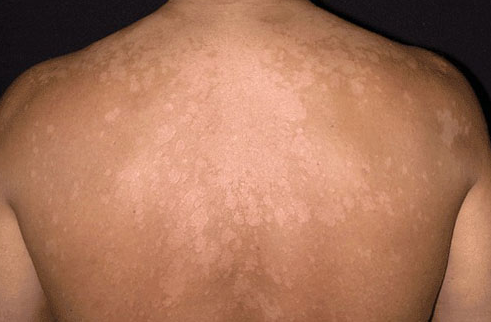Fungal Infections: Introduction
Irritated by the fungal infection on your back? Clocip dusting powder is the best way to get rid of it! While most of us worry about the bacteria and viruses that cause diseases in the body, there is a third group– fungi; that are known to cause skin lesions. Fungal skin diseases are very common in warm, tropical climates.

Moist, warm skin forms the perfect habitat for fungi to grow, resulting in skin lesions that can be itchy, dark in colour, and can be highly uncomfortable. Fungal skin infections can be of different types, depending on the fungus causing the disease. The lesions can be dry or wet, and very often, topical applications like Clocip cream or dusting powders provide instant relief.
Fungal Infections that Occur on the Back
Fungal infections can occur on any part of the body, from head to toe, and each of these has characteristic signs and symptoms. Fungal infections that commonly occur on the back include:
- Tinea Versicolor/ Pityriasis Versicolor
This is a fungal skin rash that is caused by an excessive growth of yeast on the skin. It is identified by dark and light patches on the skin, and it usually occurs on the chest and back. The patches of the rash change colour, and it may take a few weeks to months for the skin to return to its normal colour after treatment with topical products like Clocip dusting powder or cream.
People with moist, oily skin and weakened immune systems living in a warm, humid climate are more likely to develop this condition. Mild itching and tanning of the patches in the Sun during summer are the most common signs and symptoms of Tinea Versicolor.
2. Ringworm
Ringworm infection is a very common fungal infection that can affect both the young and the old. Unlike its name, a ringworm infection is caused by a mold (a type of fungus). It has a characteristic appearance of a red, scaly patch, or a bump that itches. Over time, this patch becomes circular in shape and gains a ring-like appearance, triggering the name.
One can contract the ringworm infection from another affected person, from the soil, pets and also by touching infected objects. Ringworm infection can occur anywhere on the body, and is named accordingly.
3. Pityriasis Rosea
A common disease in people who live in warm, humid climates, this disease is characterised by a slightly pinkish rash that begins as an oval or circular spot on the chest, abdomen, or back. This spot is called a Herald’s Patch and is surrounded by many small patches. The rash can be itchy at times, and is triggered by excessive sweating.
Management of Fungal Infections on the Back
How to care for them?
- Avoid the hot, humid weather
- Stay away from oily products
- Wear comfortable cotton clothes that soak sweat, and allow your skin to breathe
- Keep your skin cool and dry
Treatment
- If you suffer from Tinea Versicolor, your doctor will most likely prescribe you a topical cream or powder, like Clocip dusting powder to be applied 2–3 times a day, for a few days.
- In some cases, your doctor may also prescribe oral antifungals to help reduce the infection.
- For infections like ringworm, you will most likely be prescribed topical lotions, creams of dusting powder, like Clocip dusting powder. Many of these products are also OTC products that contain antifungal medications.
- Fungal infections like Pityriasis Rosea, usually go away by themselves within 4–10 weeks, but in some cases, they require oral or topical antifungal treatments. Topical application of products like Clocip cream can be beneficial to treat this condition.
Fungal infections are very common in countries like India due to their predominantly tropical, humid weather. Since most fungal infections occur on the skin, these diseases are relatively easier to treat using antifungals like Clocip cream, lotion, dusting powder and oral medications.
